SLOS938F May 2016 – January 2020 TPA3136AD2 , TPA3136D2
PRODUCTION DATA.
- 1 Features
- 2 Applications
- 3 Description
- 4 Revision History
- 5 Device Comparison Table
- 6 Pin Configuration and Functions
- 7 Specifications
- 8 Parameter Measurement Information
- 9 Detailed Description
-
10Application and Implementation
- 10.1 Application Information
- 10.2
Typical Applications
- 10.2.1 Design Requirements
- 10.2.2
Detailed Design Procedure
- 10.2.2.1 Ferrite Bead Filter Considerations
- 10.2.2.2 Efficiency: LC Filter Required with the Traditional Class-D Modulation Scheme
- 10.2.2.3 When to Use an Output Filter for EMI Suppression
- 10.2.2.4 Input Resistance
- 10.2.2.5 Input Capacitor, Ci
- 10.2.2.6 BSN and BSP Capacitors
- 10.2.2.7 Differential Inputs
- 10.2.2.8 Using Low-ESR Capacitors
- 10.2.3 Application Performance Curves
- 11Power Supply Recommendations
- 12Layout
- 13Device and Documentation Support
- 14Mechanical, Packaging, and Orderable Information
Package Options
Mechanical Data (Package|Pins)
- PWP|28
Thermal pad, mechanical data (Package|Pins)
- PWP|28
Orderable Information
7.7 Typical Characteristics
All Measurements taken at 26dB closed loop gain, 1-kHz audio, T A= 25°C unless otherwise noted. Measurements were made with AES17 filter using the TPA3136D2 EVM, which is available at ti.com.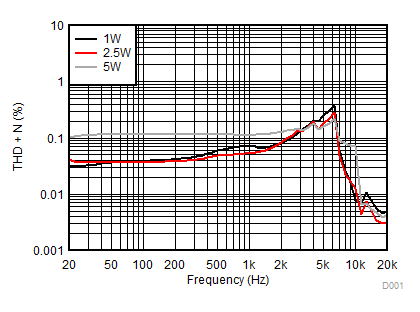 Figure 1. Total Harmonic Distortion vs Frequency (BTL)
Figure 1. Total Harmonic Distortion vs Frequency (BTL) 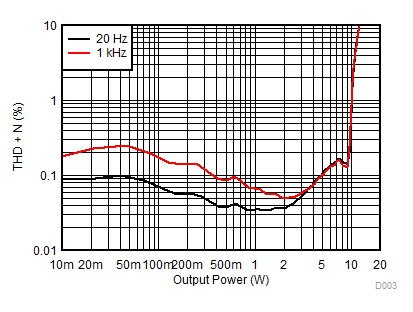
| AVCC=PVCC = 12 V, Load = 6 Ω + 47 µH, 20 Hz, 1 kHz |
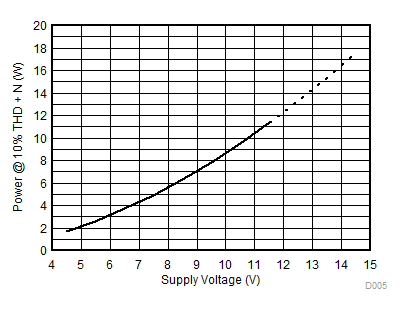
| AVCC=PVCC = 4.5 V to 14.4 V, Load = 6 Ω + 47 µH |
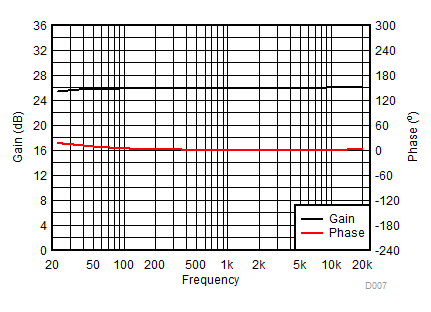
| AVCC=PVCC = 12 V, Load = 6 Ω + 47 µH (device pins) |
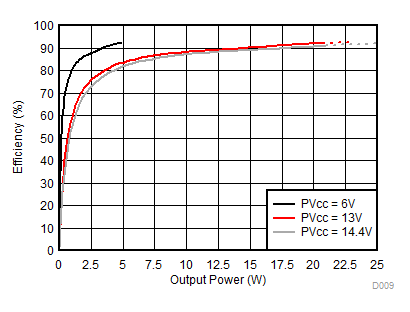
| AVCC=PVCC= 6 V, 13 V, 14.4 V, Load = 8 Ω + 66 µH |
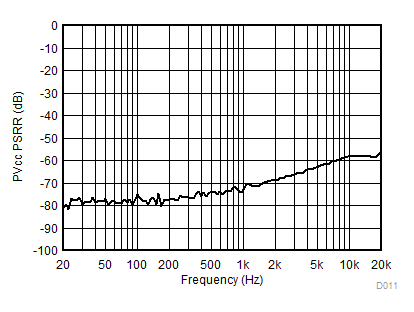
| AVCC=PVCC = 12 V, Load = 4 Ω + 33 µH |
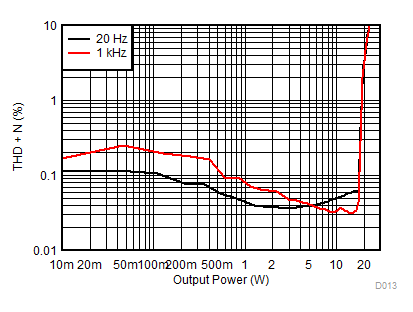
| AVCC=PVCC = 13 V, Load = 4 Ω + 33 µH, 20 Hz, 1 kHz |
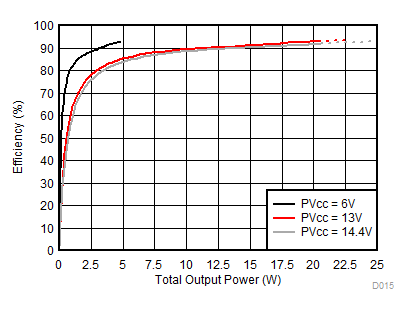
| AVCC=PVCC = 6 V, 13 V, 14.4 V, Load = 4 Ω + 33 µH | ||
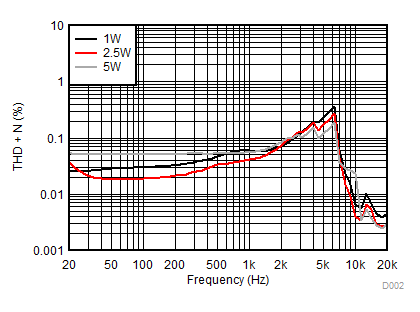
| AVCC=PVCC = 13 V, Load = 8 Ω + 66 µH, 1 W, 2.5 W, 5 W |
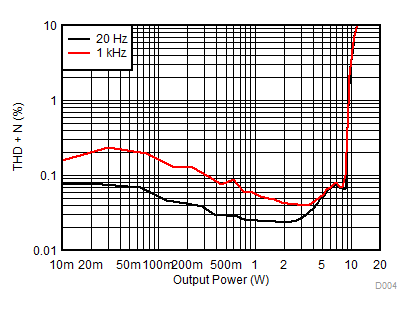
| AVCC=PVCC = 13 V, Load = 8 Ω + 66 µH, 20 Hz, 1 kHz |
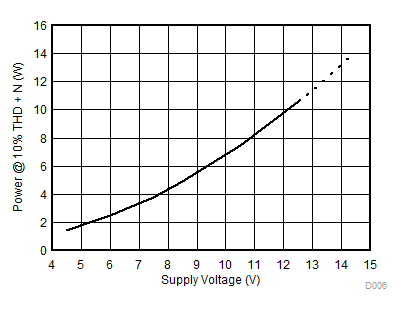
| AVCC=PVCC = 4.5 V to 14.4 V, Load = 8 Ω + 66 µH |
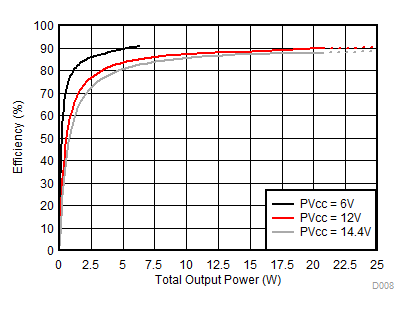
| AVCC=PVCC = 6 V, 12 V, 14.4 V, Load = 6 Ω + 47 µH |
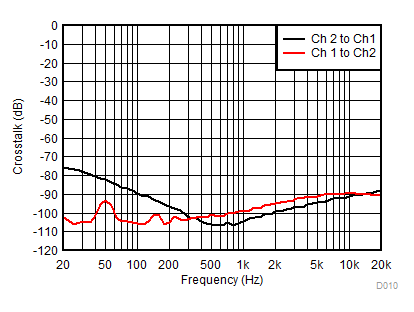
| AVCC=PVCC = 12 V, 1 W, Load = 6 Ω + 47 µH |
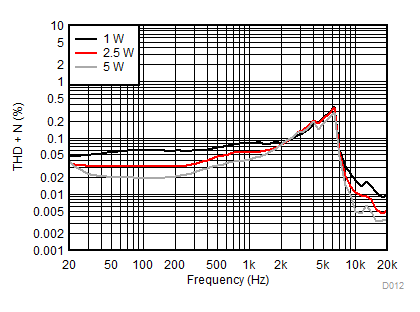
| AVCC=PVCC = 13 V, Load = 4 Ω + 33 µH, 1 W, 2.5 W, 5 W |
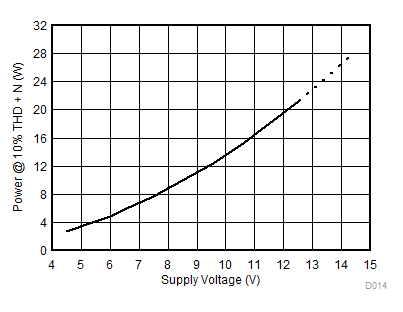
| AVCC=PVCC = 4.5 V to 14.4 V, Load = 4 Ω + 33 µH |